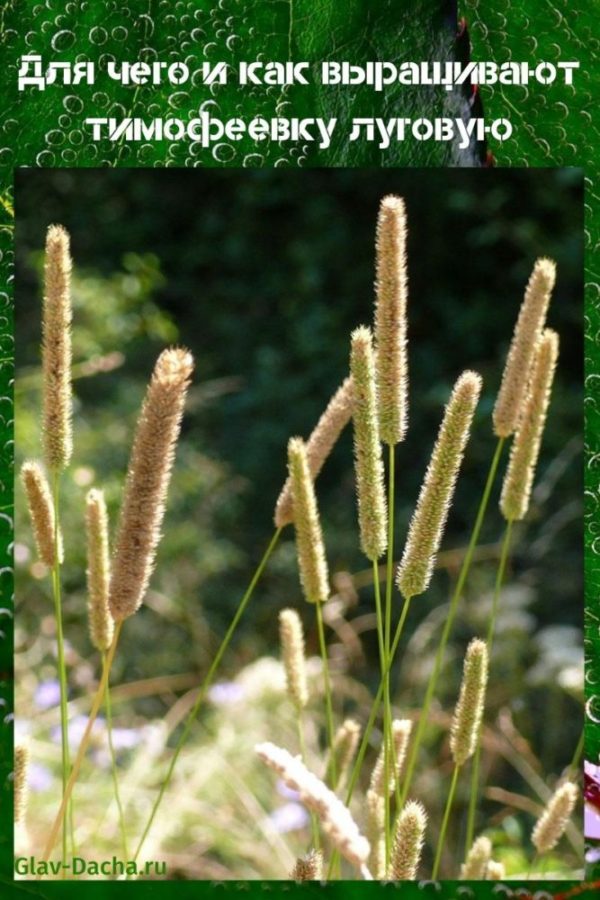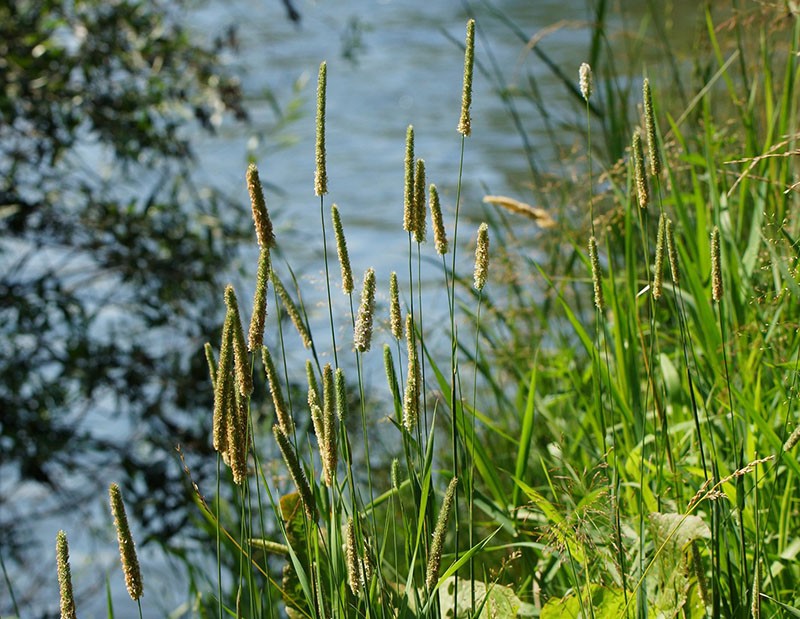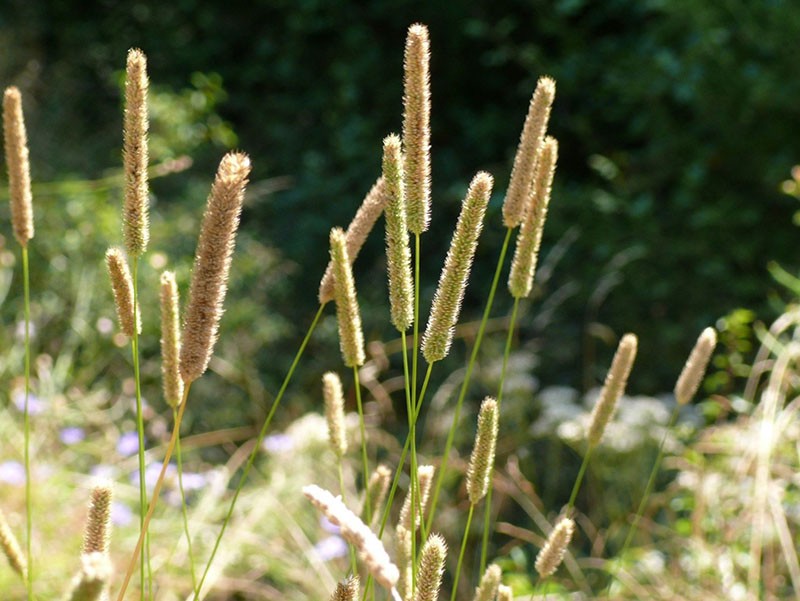Why and how the meadow timothy is grown
 Meadow timothy is one of the most widespread and valuable agricultural crops related to cereal perennial grasses. This plant is attracting increased interest from farmers and breeders due to its excellent feed characteristics. Another useful application of timothy grass is gardening areas. The grass meets all the necessary requirements for landscape design - it is distinguished by its aesthetics, excellent resistance to temperature changes and ease of maintenance.
Meadow timothy is one of the most widespread and valuable agricultural crops related to cereal perennial grasses. This plant is attracting increased interest from farmers and breeders due to its excellent feed characteristics. Another useful application of timothy grass is gardening areas. The grass meets all the necessary requirements for landscape design - it is distinguished by its aesthetics, excellent resistance to temperature changes and ease of maintenance.
Botanical description

The plant can be recognized by its characteristic features:
- A fibrous root system that penetrates the upper layers of the soil to a depth of 80-100 cm.
- Thin, erect, cylindrical stems up to 2-3 mm wide, with a thickened and strong base. Their length reaches 50-130 cm.
- Leaves are linear or lanceolate, narrow and flat, up to 1 cm wide, up to 12-15 cm long. The color of the foliage is light green or dark green.
- The inflorescence has the appearance of a spike-shaped panicle (also called a sultan - a false ear), cone-shaped or cylindrical, up to 15-20 cm long.
- Seeds are small, round-oval, yellow-brown in color.
 When meadow timothy blooms depends on the climatic conditions of the region. In central Russia, the plant can bloom at a temperature of + 18-19 ° С from mid-June to early August.
When meadow timothy blooms depends on the climatic conditions of the region. In central Russia, the plant can bloom at a temperature of + 18-19 ° С from mid-June to early August.
Timothy belongs to perennial crops with slow growth. The maximum yield of a plant can be obtained only after 3-4 years from the moment of sowing. At the same time, on fertile soil, the culture retains high productivity up to 8-10 years.
Growing regions

Timothy is a plant that is found almost everywhere. Where does timothy grass grow:
- mountain slopes;
- steppe;
- fields;
- roadsides;
- dry and flooded meadows;
- forest glades.
Perennial grass can be found in Russia and other European countries. In the wild, the plant grows in the Caucasus, Australia, America, and some African countries.
Timothy meadow: scope
 Timothy grass is used in agriculture as a forage crop. It is highly regarded for the quality and abundance of green mass. But it quickly hardens and stiffens, so only young grass is used as feed.
Timothy grass is used in agriculture as a forage crop. It is highly regarded for the quality and abundance of green mass. But it quickly hardens and stiffens, so only young grass is used as feed.
The green stems of timothy grass are used for feeding cows, bulls, horses, rabbits, chinchillas. The fodder plant is harvested for the winter in the form of silage or hay. Timothy can be cultivated as an independent crop or in grass mixtures - most often with clover, in fodder or field crop rotations.
Use in landscape design
 Timothy meadow is often used in landscape design, because it meets all the requirements for herbs for landscaping - good frost resistance, decorative attractiveness and ease of care.
Timothy meadow is often used in landscape design, because it meets all the requirements for herbs for landscaping - good frost resistance, decorative attractiveness and ease of care.
The plant is used in lawn mixtures. To decorate a beautiful and high-quality lawn, timothy is most often combined with ryegrass, bluegrass and fescue. It tolerates frost well, retaining a rich green color.
Timothy grass for lawn has several disadvantages.It can be mowed to a height of at least 4 cm, since the grass recovers very long and poorly after low haircuts or intensive human exposure - for example, on sports grounds or stadiums.
Growing timothy
 The technology of cultivation of meadow timothy has its own characteristics and nuances that must be taken into account when growing a forage crop. It is highly frost-resistant, but it does not tolerate long-term precipitation and dry weather very badly.
The technology of cultivation of meadow timothy has its own characteristics and nuances that must be taken into account when growing a forage crop. It is highly frost-resistant, but it does not tolerate long-term precipitation and dry weather very badly.
In its pure form, the crop is grown to obtain seeds, but most often the plant is used to create a forage base in the field. crop rotations with sainfoin, alfalfa and clover.
Requirements for temperature, moisture and soil
 Seeds of timothy grass begin to grow at an air temperature of + 2 ° С, the optimal temperature is + 18-20 ° С. In terms of frost resistance, this culture is in no way inferior to winter rye.
Seeds of timothy grass begin to grow at an air temperature of + 2 ° С, the optimal temperature is + 18-20 ° С. In terms of frost resistance, this culture is in no way inferior to winter rye.
Timothy is a moisture-loving plant and does not tolerate dry weather. Prolonged heat leads to the fact that crops become sparse and weakened, and sometimes die.
 The plant is unpretentious in the choice of soil. It can grow on various types of soil, except for saline, waterlogged and sandy soils. Alkaline and neutral soils are considered the best option for acidity.
The plant is unpretentious in the choice of soil. It can grow on various types of soil, except for saline, waterlogged and sandy soils. Alkaline and neutral soils are considered the best option for acidity.
Soil preparation and sowing
 Before sowing timothy grass, the soil is prepared. It is cleared of weeds, cultivated and applied with nitrogen fertilizers or manure (30 tons per 1 ha of area). If the seeds are sown in early spring, the soil is harrowed to a depth of 25 cm.
Before sowing timothy grass, the soil is prepared. It is cleared of weeds, cultivated and applied with nitrogen fertilizers or manure (30 tons per 1 ha of area). If the seeds are sown in early spring, the soil is harrowed to a depth of 25 cm.
Consider when to sow timothy grass. This can be done both in spring and autumn. In the first case, sowing is carried out in April, the seeds begin to germinate after 7-8 days.
For autumn crops, mixtures with alfalfa or clover are most often used. The rate of seed when planting timothy as an independent crop is 11 kg per 1 ha of area, in the composition of the herbal mixture - 6 kg per 1 ha of plot.
Meadow timothy is sown in a continuous manner, standard for cereals. The optimum planting depth is 1-2 cm. To obtain seeds, the wide-row method with an interval of at least 50-70 cm is considered the most effective option.
One of the features of meadow timothy is a long growing season in comparison with other forage crops. Depending on the variety, from the moment of growth to full flowering of the plant, at least 60-80 days pass.
Crop care
 An important part of caring for meadow timothy crops is the systematic rolling of the soil. For the first 6-8 weeks after sowing, this crop remains highly susceptible to weeds.
An important part of caring for meadow timothy crops is the systematic rolling of the soil. For the first 6-8 weeks after sowing, this crop remains highly susceptible to weeds.
To combat weeds, inter-row cultivation is carried out immediately after the appearance of the first shoots. Re-processing is carried out if necessary, with the reappearance of weeds. Inter-row cultivation is carried out with the same machines as for standard cultivation of row crops.
For the destruction of weeds, herbicides can be used - 2,4-D-bcytyl ether is most often used. Also, when caring for meadow timothy crops, fertilizing with nitrogenous fertilizers is mandatory, after which harrowing is carried out in 2 tracks.
Harvesting Timothy
 The length of time until the ears of timothy grass ripen can be up to 40-70 days, depending on the weather conditions of the growing region. It is during this period that mowing can be carried out for harvesting silage and hay. Timothy seeds are harvested by a harvester after they are fully ripe.
The length of time until the ears of timothy grass ripen can be up to 40-70 days, depending on the weather conditions of the growing region. It is during this period that mowing can be carried out for harvesting silage and hay. Timothy seeds are harvested by a harvester after they are fully ripe.
Timothy grass is a valuable forage plant that is used in agricultural and landscape design.The perennial crop is distinguished by excellent nutritional qualities, due to which it is used as feed for livestock. It is distinguished by its ease of cultivation, ease of maintenance and good frost resistance, which has made it widely popular among farmers and livestock breeders.